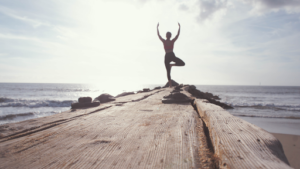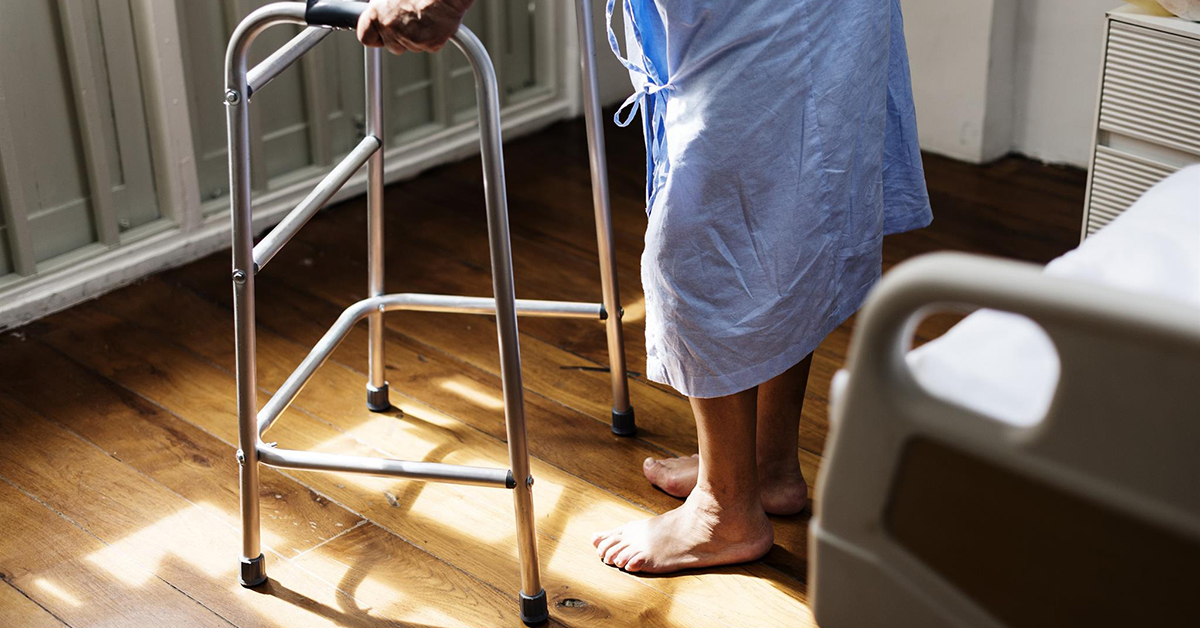National Fall Awareness Day is September 23rd. If you have an elderly loved one, you are probably all too aware of the dangers that falling can present. Fortunately, some simple steps can be taken to keep your loved one safe.
The first step is being aware of things that may put your loved one at risk for a fall. According to the National Council on Ageing, the most common causes of falls in seniors are:
- Problems with balance and gait, often caused by loss of coordination, balance, and flexibility
- Deteriorating vision that makes it harder to see obstacles
- Medication side effects like dizziness
- A home environment that has not been modified for the older adult’s changing needs.
- Chronic conditions such as arthritis, diabetes, or a history of stroke.
Let’s take a look at how you can mitigate each of these risk factors.

Improving Balance and Vision
A variety of factors can cause problems with balance and coordination. Vision problems and problems with the inner ear can make balancing difficult and lead to falls.
Glasses can improve most vision problems. Ask your loved one when they last had their eyes checked. If it’s been a while, make an appointment with an optometrist. Good vision is necessary for balance and to help with identifying tripping hazards.
Vertigo is a very common inner ear problem that causes dizziness and can lead to falls. If your loved one is complaining of dizziness, have them checked for vertigo. Symptoms of vertigo can be improved and even cured with physical therapy. The treatment for vertigo consists of several different head movements that have to be done multiple times a day. A physical therapist or chiropractor can help to teach you and your loved one how to do the exercises. Depending on the older adult’s overall state of health, they may need assistance from you or a home health care nurse to perform the activities at home.
Another common cause of balance problems is a misalignment of the pelvis and spine. This is usually caused by inactivity and poor posture. Regular chiropractic care can realign the spine, neck, and pelvis, leading to better balance and coordination. A chiropractor can also help people of any age learn to have better posture. Good posture reduces the risk of spinal problems. Regular exercise, such as walking will also help to keep the spine healthy between adjustments.
In addition to walking, exercises like tai chi and yoga can strengthen core muscles that are crucial for balance. They can also improve flexibility. People who are more flexible are less likely to fall and are also at less of a risk for exercise-related injuries.

Preventing Medication Side Effects
Many older people take multiple medications to help with conditions like high blood pressure or heart disease. Some of these medications make it easier to become dehydrated. Even mild dehydration can cause dizziness or lack of coordination, increasing the risk for a fall. Talk to your loved one about drinking plenty of water. Using a cup that is marked to show how many ounces have been drunk can help them to know how much water they have had that day. Beverages containing electrolytes can also be helpful, but make sure to pick ones that don’t contain large amounts of sugar.
Using pillboxes or a written schedule can be helpful to an older adult who has to keep track of lots of medications. If your loved one needs to take medications at certain times, try setting alarms on their watch or phone. Dividing their medications into separate pillboxes (e.i. Morning, noon, and bedtime) can also be helpful.
Be on the lookout for medication interactions and don’t be shy about asking your pharmacist about what medications should not be taken together. If there is a problem with interactions, speak to your loved one’s doctor about different medication options. The same rule applies to medication side effects. If a medication causes dizziness or any other intolerable side effect, check with a doctor to see if a different medication or a different dosage could work better.

Making Home Safer
There are simple modifications that can be made to your elderly loved one’s home to help them keep their independence. An essential and often overlooked issue is the lighting. Make sure that there is good lighting at the top and bottom of stairs. Put nightlights in places where your loved one might walk during the night, such as between bedrooms and bathrooms.
Bathrooms can be dangerous places for seniors. Consider having a walk-in tub or walk-in shower (preferably with a bench) installed in place of a traditional tub. If that is not an option, install grab bars in the shower or tub. For extra safety, add a shower chair and detachable showerhead. Grab bars should also be installed by toilets. If your loved one has knee or hip pain, elevated toilet seats can make sitting down and standing up more comfortable.
Stairs are another problem area. Make sure that all indoor and outdoor stairs have a sturdy handrail on both sides. If baby gates or other tripping hazards are present, remove them or use safer options (such as walk-through baby gates.)

Managing Chronic Conditions
Chronic conditions can make physical activity difficult for older adults, and inactivity can have a negative impact on balance and coordination. Diet, medication, and exercise are all crucial parts of managing chronic conditions and maintaining overall health.
Talk to your loved one about their diet and make sure that they are getting the nutrition they need. It may be helpful to consult a licensed nutritionist, as the nutritional needs of seniors are different than for younger people. If your loved one has diabetes or heart disease, then nutrition will play an essential role in managing their condition.
Help your loved one to get active. Start with whatever amount of activity they feel comfortable with, even if it’s just a walk around the house. Slowly increase exercise until they are achieving the level of activity that their doctor recommends. Higher activity levels will help with flexibility, balance, and weight. Maintaining a healthy weight will improve overall health and decrease pressure on joints.
If your loved one suffers from osteoarthritis, they may have a hard time moving around. Exercise can improve arthritis symptoms, but some patients will need to decrease pain before they are able to increase activity. The American College of Physicians recommends chiropractic care as a drug-free intervention for osteoarthritis.
Chiropractors have over 150 different techniques they can use in adjustments. For a patient with arthritis, a chiropractor will choose gentle methods that will improve joint function without increasing discomfort. Most osteoarthritis patients start to see improvements in their symptoms with between four to ten visits to a chiropractor. After the patient achieves their goal for improvement, less frequent ‘tune-ups” can be scheduled to keep arthritis symptoms in check. Increasing joint function will lower your loved one’s chance for a fall.

